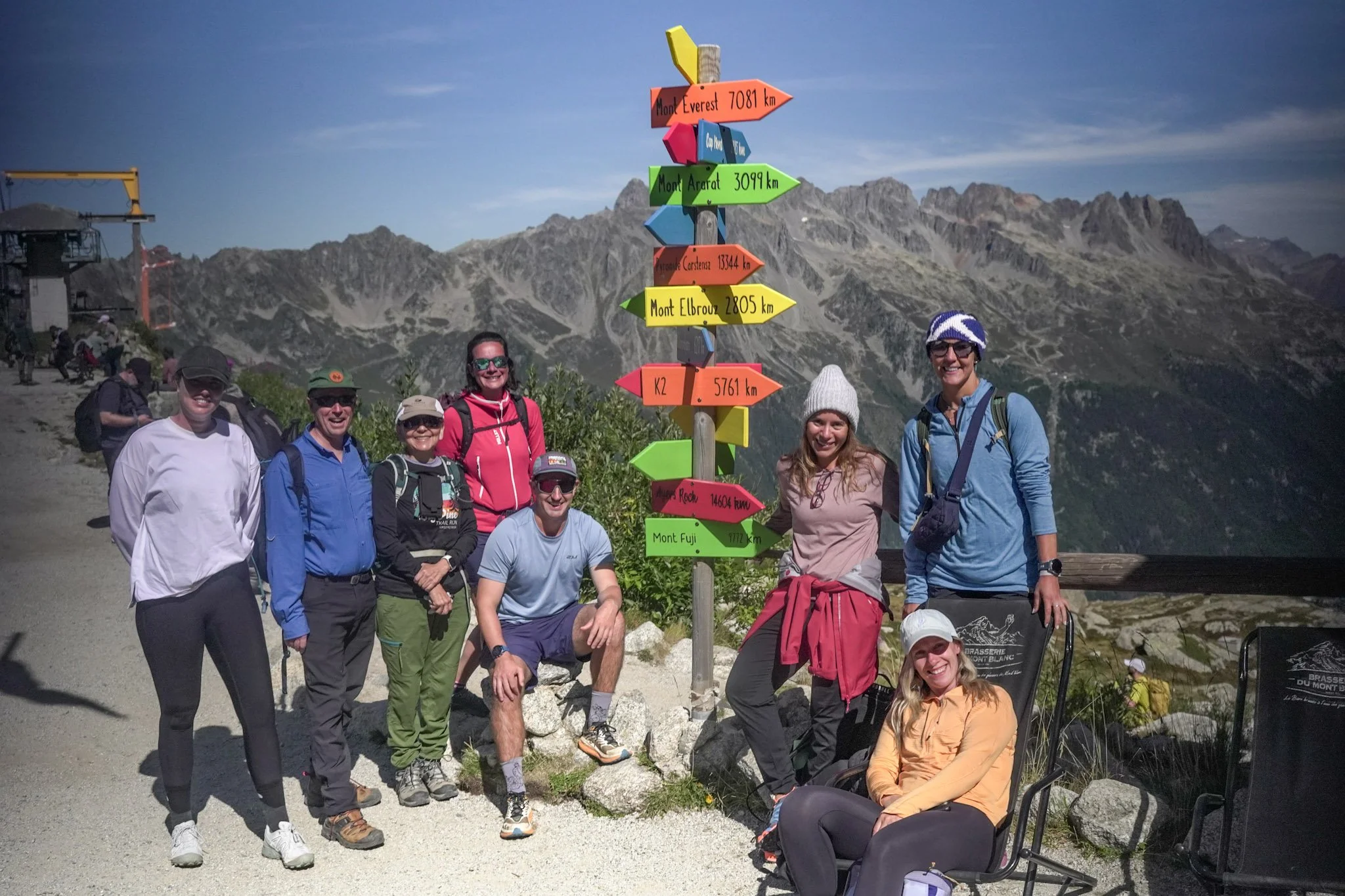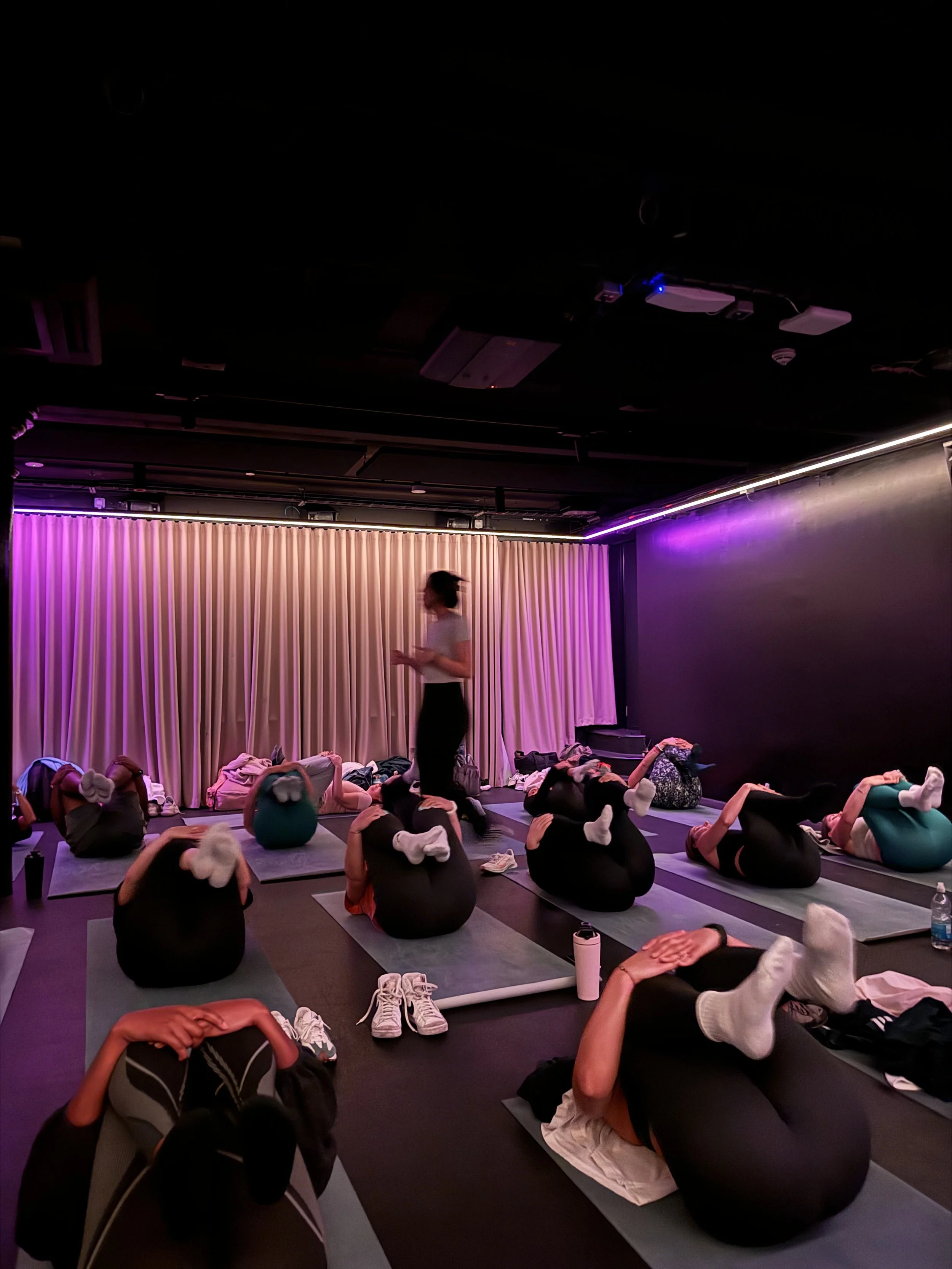How Does Chiropractic Work: Our Chamonix Expert on the Impact Beyond the Yoga Mat
There are so many different practices and modalities available when the body is in need of repair, recovery, or simply a bit of TLC. But knowing exactly who to see, and what they actually help with, can be surprisingly unclear.
Most people have a general idea of what a physiotherapist does. But when it comes to osteopaths, chiropractors, or other manual therapists, the lines can start to blur. What’s the difference between them? When should you see one over the other? And what’s really going on when someone adjusts, aligns, or mobilises your body?
To answer some of those questions, and to explore the connections between movement, pain, and long-term health, we spoke with Dr. Megan Clayton, a chiropractor, yoga teacher, and structural integration specialist based in Chamonix. Her approach combines deep anatomical knowledge with a passion for movement, helping people not only recover from pain and injury, but also reconnect with how their bodies are designed to move. Megan will be hosting the yoga sessions at our Chamonix retreat in September, so we sat down with her to learn more about her journey, her work, and how she helps people move and feel better in their bodies as well as their minds.
Why Visit a Chiropractor?
“Often, people will visit a Chiropractor for the first time because something isn’t quite right”, says Megan. “It might be pain, or a loss of mobility in a certain joint, or they may no longer be able to execute something in either their training programme or daily life, that previously they had no issues with. The beauty of visiting a Chiropractor is that people will come in with a problem, and a Chiropractor’s goal is to determine the root cause of the issue or dysfunction, and then, to eliminate the cause.
However, visiting a Chiropractor is about so much more than going in to resolve a single issue.
“A Chiropractor doesn’t just want to look for pain points, they are looking for the potential to elevate performance or expression of the body.
When someone comes in and we can see that a movement pattern or particular function of the body is limited in its full potential, we want to release that in order to enable the body to achieve its highest potential.”
In terms of what actually happens in the session? “We’ll apply an impulse to a joint or soft tissue – the one someone has come in with a problem about, but also surrounding tissues and joints – in order to create a particular reflex in the nervous system which will improve the way the body functions. For example, when we apply an impulse of a Chiropractic adjustment, it creates a quick stretch to the opposing muscles, and we are able to impose a relaxation to said opposing muscles. However, that’s just one type of reflex, and there are many others that involve various functions of the nervous system.
So I’m not just looking for pain points, I’m looking to see how everything works both in silo and together, so that I can help to reestablish the connection between the body and the nervous system.”
A Focus on the Fascia
Megan’s approach to Chiropractic care goes beyond the traditional image we may have of spinal adjustments. With a background in a wide range of manual therapy techniques, she specialises in structural integration, which is a practice that focuses on the fascia and connective tissues that support and shape the body.
These tissues don’t just hold us together physically; they also play a key role in how we move, recover, and regulate internally. This is where the nervous system comes in. In chiropractic, the nervous system is understood as the master control system, meaning it’s the main way in which the brain communicates with and controls every function in the body. As fascia is pervasive throughout the body and also surrounds the nervous system, it also acts as a medium for the communication of the nervous system, allowing signals to pass through tissues, so that everything from muscle contraction to organ function can coordinate harmoniously.
We’ve all heard about fascia. Most of us commonly associate it with foam rolling, as we’ve generally been led to believe that the two go hand in hand. “But fascia is so much more than that”, says Megan. “Because when fascia becomes restricted, whether that’s due to stress, injury, or lifestyle, it can block these signals and disrupt how the body moves and feels. It’s not just about things feeling tight or not tight – it’s about how the fascial lines are working together.
Megan looks at how connective tissues connect throughout the body through anatomical lines and how they impact our posture, performance, and pain. It’s why she incorporates fascia therapy into her manual practice, and why she’s just as likely to prescribe a yoga pose or corrective movement patterning as she is a chiropractic adjustment. "Some yoga asanas are incredibly effective at releasing long-held tension in these anatomical lines."
The Road to Yoga and Chiropractic in Chamonix
Before she transitioned her career to yoga flows and posture corrections, Megan was working in the world of finance in Geneva, Switzerland, and New York City. Having always been passionate about sports, particularly marathon running and yoga, the goal of trying to balance a desk job with a very active lifestyle caused her body to break down and not perform at its best. “Working a job which required me to sit at a desk all day caused an old ski injury to flare up, which is what led me to visit a chiropractor based opposite my office. After just one visit, I started to see an improvement in my pain, and I started to learn about the nervous system and the positive impacts that chiropractic adjustments can have on it. The more I learnt, the more confident I was that I’d found my true passion and my path.”
Determined to pursue her calling, Megan sought out the most in-depth training she could find and enrolled in a six-year chiropractic programme in Paris.
After qualifying, she made the decision to relocate to Chamonix, a place she already knew and loved from past ski and trail running trips. Surrounded by mountains and an active community, it felt like the perfect place to put her knowledge into practice and build a life rooted in movement, health, and nature.
The Beauty of Chamonix
For anyone who has visited Chamonix, they will attest to it being a place like no other. Situated in the valley between the Mont Blanc and the Aiguille Rouge Massif, its history, culture and traditions extend far beyond just skiing. “Chamonix is never truly quiet,” Megan reveals. “While May used to be considered off-season, the town now sees visitors and activity year-round. You’ll encounter so many different groups of people, from elite international athletes and long-time locals to weekenders escaping nearby cities like Milan, London, and Geneva, which is just over an hour away.”
But what makes Chamonix special isn’t the ease of getting there. The history and the atmosphere can’t be matched. “As the birthplace of alpinism, it was one of the first destinations where people began climbing mountains for sport. It has around 10,000 residents year-round, but in peak season, that number can surge to over 100,000. Being in such close proximity to Switzerland and Italy, you can pop to a neighbouring country for lunch and be back in Chamonix by the end of the day.”
Helping You Adapt to Alpine Life
Megan’s work reflects the diverse population of Chamonix. “My clients range from extreme sports athletes who have specific injuries and performance optimisation strategies, to local residents who come to me with typical neuro-musculoskeletal problems. When there’s space in the schedule, weekend visitors also visit the clinic to make the most of the desk-job-to-mountain-sports transition.
Because when you change activities quickly, such as going from sitting at a desk to powering down the slopes, you have different muscles switching on very quickly. This can lead to acute tension and soreness presenting itself as soon as you start moving around in steep elevation gains.”
Despite the different demographics of her clients, most of them come in to either move better, or stop something from hurting.
For the athletes, it’s often about optimisation, so building strength, endurance, resilience, and movement efficiency that supports their sport. They may already be in tune with their bodies, but Megan’s structural integration work helps them go deeper, identifying subtle imbalances or restrictions that could impact recovery or performance over time. These clients tend to be proactive. They want to stay strong, adaptable, and injury-free.
But many others show up when something’s already not quite right.
“I see a lot of people who live city-based, fairly sedentary lives during the week, and then launch themselves into high-impact outdoor activities the moment they arrive in the mountains.
Muscles that have been mostly inactive for five days are suddenly asked to perform at their max. The result is usually a build-up of tension in some areas due to sub-optimal posture during the week at the same time as acute discomfort in other areas, that compensate for that tension. It’s also common to see weekend warriors push themselves hard during their time off on the slopes, and then deal with the consequences when they get back,” she says.
Her advice?
“Prepare in advance for the activities you are planning. Understand the demands of your sport, whether that’s skiing, snowboarding or trail running, if you’re in the Alps, and make sure your body is ready to meet the challenges both physically and neurologically.
That might look like booking in for some light, corrective work during your trip, or giving yourself more recovery time instead of packing your schedule. You’ll always get more out of your holiday if you also give your body the time and space to adapt.”
A Chamonix Retreat: What to Expect
“When people come to Chamonix for a retreat, they’re often looking to reset,” says Megan. “And that doesn’t just mean switching off, it means learning how to move differently, how to move better, and how to take care of your body in a more intentional way.”
Throughout the Chamonix retreat in September, Megan will lead a range of yoga sessions designed to complement the hiking and activities. “Some of the sessions will be slower and more restorative, with longer holds and more time to breathe and release. Others will be more dynamic, to help you activate the right muscles ahead of a day on the mountain. Think of them like ‘wake-up’ classes where we get the blood flowing, connect with the breath, and prepare the body for movement.”
But it’s not just about yoga. Megan also takes time to observe how people move. “In the first session, I will initially do some movements so I can study everyone, watch their movement patterns and see what may be helpful in a corrective way. I can watch their postures and see how different people hold tension and how they respond to load, and offer advice to get the most out of the week.”
Chamonix in September
There’s a reason the More Life Adventures team keeps coming back to Chamonix. It’s not just the scenery, although that does play a huge part. This iconic alpine town is one of the world’s original mountain destinations and yet, it still somehow feels like a hidden gem.
This September, join us and Dr. Megan Clayton for a retreat designed to give both your body and mind the reset it deserves. With daily yoga, world-class hiking, and expert guidance to help you move better and feel stronger, it’s the perfect way to take a step back, reconnect with nature, and look after your body alongside people just like you. Find out more and book your place here.










